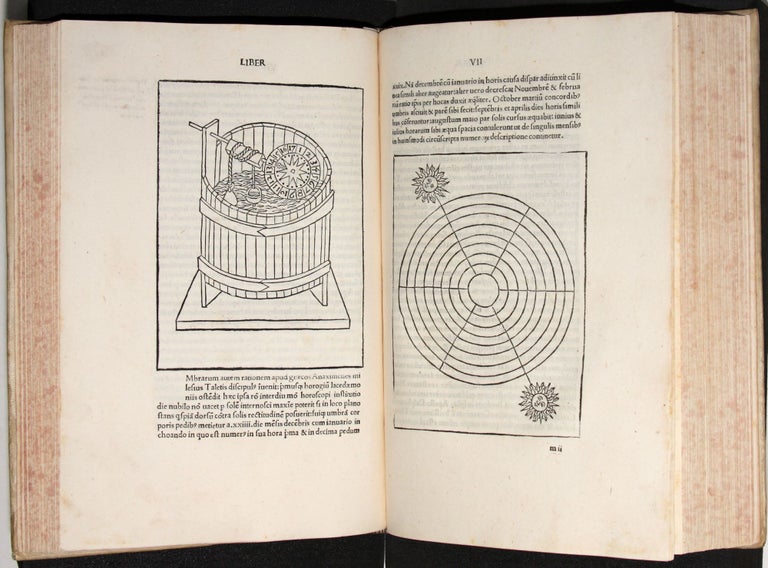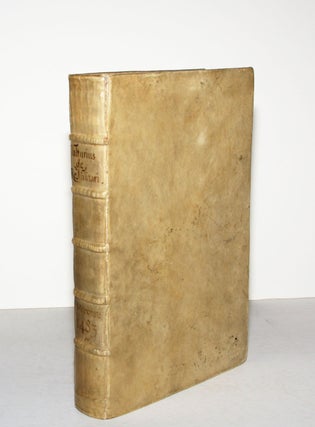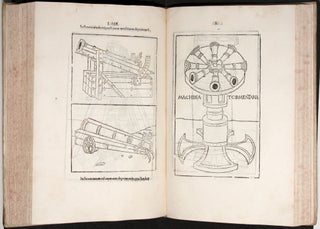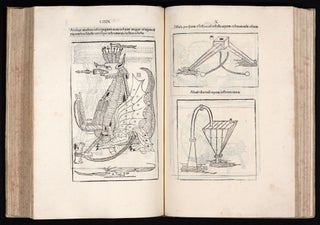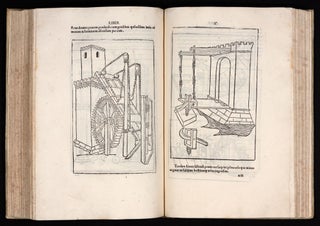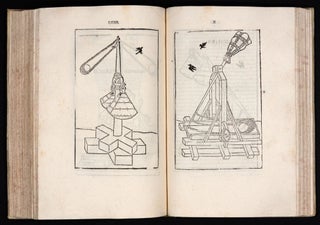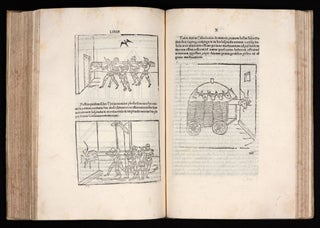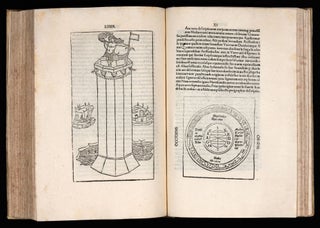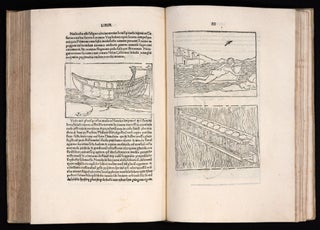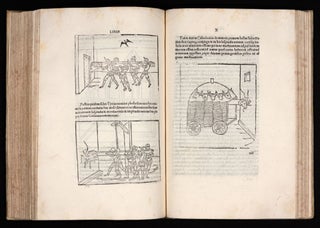De Re Militari.
Folio [31.5 x 21 cm], (254) ff., including initial and final blanks, 96 woodcuts, of which 18 are full-page. Bound in late 17th-century vellum over boards, spine with raised bands, title neatly stenciled in gothic letters on spine. Housed in modern book box. Chapter headings neatly calligraphed in a contemporary hand in margins (chiefly in early signatures). A few cracks and some trivial soiling to covers. Portions of some blank margins of a handful of leaves unobtrusively renewed, with absolutely no loss to printed surface. A broad-margined, fresh, very appealing copy with excellent cuts of the woodblocks. "The historical importance of De Re Militari lies in the fact that it is the first book printed with illustrations of a technical or scientific character depicting the progressive engineering ideas of the author's own time. The woodcuts illustrate the equipment necessary for the military and naval engineer; they involve revolving gun turrets, platforms and ladders for sieges, paddle-wheels, a diver's suit, a lifebelt, something resembling a tank, pontoon and other bridges, a completely closed boat that could be half submerged, etc... The Verona Valturius and its reprints were the handbooks of the military leaders of the Renaissance, and Leonardo da Vinci, when acting as chief engineer to Cesare Borgia, possessed a copy and borrowed some of its designs (PMM, 1472 ed.). The importance of the illustrations cannot be emphasized enough, whether for the future role of book illustration generally or more specific applications in technical treatises of the period. The best description is probably that of Ivins: "This was not edification at all, and neither was it decoration. It was THE DELIBERATE COMMUNICATION OF INFORMATION AND IDEAS. The historians have concentrated their interest on some technicalities in the printing of the book and on the identity of the designer of the woodcuts, but they have unanimously overlooked the importance of these illustrations as THE FIRST DATED SET OF ILLUSTRATIONS MADE DEFINITELY FOR INFORMATIONAL PURPOSES" (Prints & Visual Communication, pp. 31-2). It is not surprising that the important exhibition Fact & Fantasy, which attempted to chart the evolution of realistic depiction through the illustrated book began with Valturius (Dept. of Printing & Graphic Arts, Harvard College Library, 1976, no. 1). Although a firm attribution for the origin of the woodcuts has yet to be established, it is suggestive that the two candidates most frequently mentioned were (among other things) practicing architects, both in the service of Sigismondo Malatesta, Lord of Rimini. The work's author, Valturio (1413-83), served as engineer to Malatesta. He composed the work c. 1460, and it circulated in manuscript until its first printing. Within four days of publishing the editio princeps, Boninus utilized the same blocks to produce an Italian-language edition translated by Paolo Ramusio, father of the well-known travel writer Giovanni Battista. * BMC VII.952; Goff V-89; Dibner, Heralds, 172; for the attribution of the woodcuts to Giocondo, see Rodakiewitz, “The editio princeps of Roberto Valturio’s ‘De re militari’ in Relation to the Dresden and Munich MSS,.” Maso Finiguerra XVIII-XIX (1940), pp. 15-82; see Alexander’s entry in The Painted Page, no. 63.
Scarce second Latin edition (first 1472) of this treatise on the art of war, containing THE EARLIEST TECHNICAL ILLUSTRATIONS IN A PRINTED BOOK. According to Sander, this edition contains an original set of woodblocks which appear here for the first time; they are very slight reductions of the blocks of the original 1472 edition and are augmented by a single woodcut (f. r1 recto, two men sitting inside a tent). Their differences from the original blocks are so modest that they are virtually identical. The design of the woodcuts has been variously attributed to the Alberti pupil Matteo de' Pasti or Fra Giocondo, the Veronese architect who produced the first illustrated Vitruvius (1511).
Price: $0.00

